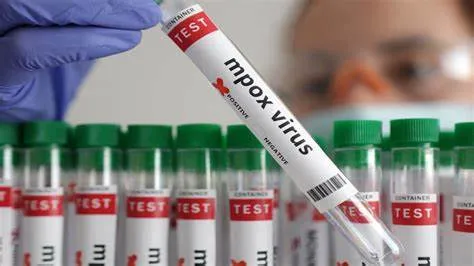Information asymmetry, a concept deeply studied by philosophers and economists, occurs when one party has more or better information than the other. This can create an imbalance of power in transactions, leading to a lack of fairness or transparency. In healthcare, such asymmetry can lead to the exploitation of patients’ trust, especially when profit incentives are at play. This imbalance often results in uninformed consent, where patients are unaware of the true necessity or risks associated with a procedure. In India, the rise of unwarranted hysterectomy procedures conducted by private hospitals showcases this problem.
Hysterectomy, the surgical removal of the uterus, is a secondary treatment option for life-threatening gynaecological conditions such as abnormal menstrual bleeding, uterine prolapse, fibroids, and cancer. While it relieves suffering and improves the quality of life, it is important to acknowledge the potential adverse effects, including hormonal imbalance, calcium deficiency, persistent body aches, urinary incontinence, sexual dysfunction and early onset of menopause.
Strikingly, 70% of these procedures are performed in private hospitals, with a trend of conducting them on younger women. The median age for hysterectomy in India is 34.6 years, deviating significantly from practices in developed countries, where surgeries are typically performed on premenopausal women aged 45 and above. Further, despite a global decrease in hysterectomy rates, India continues to experience an upward trajectory, raising concerns about overutilization and potential overtreatment.
The prevalence rates vary among different states, with the highest rates observed in Andhra Pradesh (9%), Telangana (8%), and Bihar (6%), while Sikkim (0.8%) and Meghalaya (0.7%) have the lowest prevalence. Regional disparities show that the southern region has the highest prevalence at 4.2%, while the north-eastern region has a significantly lower prevalence of only 1.2%.
Socioeconomic factors and the exploitation within the system have further exacerbated the existing problem. According to media reports and research conducted at the community level, there has been a discernible increase in unnecessary hysterectomies. This surge may be driven by the pursuit of financial gains, enabled by both national and state health insurance policies, as well as the lack of regulation within private healthcare. This trend is particularly alarming as it disproportionately endangers those who are most vulnerable, such as individuals from economically disadvantaged backgrounds and those residing in rural locales. In certain cases, whole villages have been labelled as “wombless.” It has been suggested that the Rajiv Aarogyasri health insurance program in Andhra Pradesh may be contributing to the heightened rates of hysterectomy procedures in private medical facilities. Understandably, women with private insurance and beneficiaries of the Pradhan Mantri Jan Arogya Yojana (PM-JAY) are more prone to exploitation by hospitals. In these cases, private hospitals may be driven by profit motives to recommend unnecessary surgeries, knowing that the costs will be covered.
Further, exploitation is acutely felt by women labourers. One example worth mentioning is that of the women working in the sugarcane fields of Maharashtra’s Beed district. In this region, the rate of hysterectomy is three times higher than the national average, indicating targeted victimization of rural working women. Often, these women are either coerced or enticed into undergoing this hysterectomy to eliminate the need for menstrual leave or maternity absences, as contractors are hesitant to employ women who may require such time off. Some are even provided with advances to undergo hysterectomy, believing it would make them more robust and efficient workers. These predatory practices are not only an infringement on women’s rights but also an example of how gender discrimination is perpetuated and harmful stereotypes are reinforced.
Recognizing the gravity of the situation, the Supreme Court in April this year directed all states and Union territories to adopt health guidelines issued by the central government, especially concerning hysterectomies. The Ministry of Health and Family Welfare has also instructed states to provide data on hysterectomies performed by medical institutions.
Similarly, the Government of India has introduced comprehensive guidelines in October 2022 to curb unnecessary hysterectomies. These guidelines establish monitoring committees at various levels, including the National Hysterectomy Monitoring Committee. State/UTs received explicit instructions on data collection, monthly reporting, audits, and healthcare professional training. State-level committees will meet biannually to review the data, ensuring that unwarranted hysterectomies are minimized.
Health is a state subject. The state governments where the incidence of hysterectomies is higher, the governments should first understand the reasons for high hysterectomies. Cancer, reinforcement of beliefs that unrelated somatic problems are solved by the procedure, lack of integrated treatment for chronic pelvic pain, are some of the reasons for hysterectomies apart from the economic incentives in private healthcare. Thus, the states will not only have to create awareness about the cases wherein hysterectomy is advisable but also about reproductive health. There is also a need to address patriarchal attitudes towards gynaecological issues and empower women with knowledge and access to medical resources. Remember, empowerment is always an antidote to injustice.
Further, since private hospitals are more likely to prescribe unnecessary hysterectomies for profit, stricter regulation, monitoring, and penalties for malpractice are needed. States should also encourage more surgeries to be performed in public hospitals where the prevalence of hysterectomies is low and ensure quality healthcare.
Also, to better understand the epidemiology surrounding this issue, it is important for the NFHS in its future iterations to include comprehensive questions regarding the types of hysterectomies being performed. This will enable researchers and policymakers to gather vital information about these procedures’ prevalence and specific contexts. Additionally, questions should be asked of those who have undergone hysterectomy to gather information about the after-effects of surgery to ensure their continued health.
Aditya Sinha is OSD, Research, Economic Advisory Council to the Prime Minister, and Akanksha Saini is Young Professional, EAC-PM. Views are strictly
personal.

















